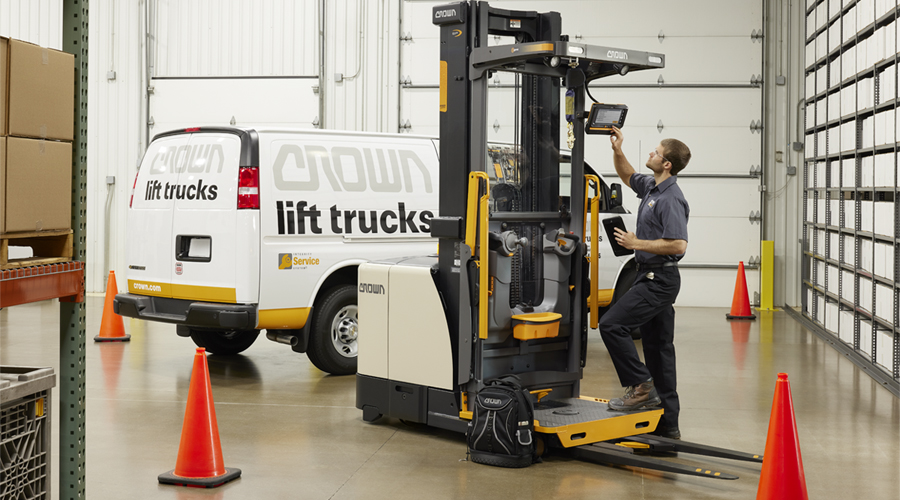Six Goals Greater Connectivity Can Help Achieve

The connection of today’s warehouse equipment, including forklifts, is nearly as prevalent as the connection of devices in our homes and our personal lives. Certain warehouse equipment now includes connectivity by default, with the option to select additional functionality to help address specific issues. These connections can provide value that grows over time, once we take the time to determine what we would like to achieve.
By default, forklifts based on Crown’s Gena operating system, including the SP Series order picker, the TSP Series turret truck and the ESR Series reach truck, are wirelessly connected. This allows for basic telematics and wireless software updates while providing the foundation to easily add InfoLink operator and fleet management without an additional hardware investment. Once an InfoLink subscription is activated, the system’s functionality is integrated within the Gena-based lift truck, using its embedded communication hardware as well as its included 7-in touch display for image-assisted pre-shift safety checklists, safety reminders and more.
In order to realize tangible benefits of forklift connectivity within the warehouse, you should establish clear goals. The key is taking a phased approach that is based on clear business objectives and builds on the successful experience of others. You are more likely to succeed if you identify key issues that you want to address.
Below are six business objectives warehouse connectivity can support:
1. Increasing efficiency: Connectivity and the resulting digitization it enables allows you to automate manual processes, such as forklift pre-shift inspections, improving efficiency and accountability.
2. Enhancing safety: With connectivity, you can control access to ensure equipment is never operated without a proper inspection or by unauthorized personnel. What’s more, connected equipment can alert you every time there is an impact, providing an opportunity to investigate the cause and implement corrective actions.
3. Improving productivity: Forklift operators are one of your most valuable assets and their productivity is tied to the equipment they operate. Connectivity provides the data to measure and improve operator productivity, helping you understand why some operators are more productive than others and identify the best practices and additional training required to increase overall productivity.
4. Optimizing utilization and uptime: How many forklifts do you need at a certain site during a certain time? That’s a tough question to answer if you can’t accurately measure utilization of your forklift fleet. Connectivity helps you capture this information, which is extremely valuable to have when right-sizing the fleet. Connectivity also enables new approaches to service that reduce costs and increase uptime by helping you better understand the health of your forklifts.
5. Reducing service costs: Understanding your maintenance spend is key to gaining control over costs and identifying opportunities to improve fleet performance. Connecting forklifts to a forklift fleet management system can provide a simple and efficient platform for maintenance tracking, providing visibility into total maintenance costs for individual trucks and entire fleets over multiple locations.
6. Implementing automation: Greater connectivity gives you the visibility into your operations you need to embark on the technology. It enables you to identify those tasks and equipment that are ideal for automation, develop a clear path for tangible ROI and provides a platform for quickly and strategically growing and evolving your automation efforts.
Prioritizing and focusing on a couple of key objectives during the early stages of connectivity will help ensure everyone involved knows exactly what you’re trying to accomplish, and that the data being collected supports those priorities. Once you realize initial objectives, you can expand the program and determine the next set of objectives. Fortunately, many of today’s forklifts already provide a foundation for connectivity to help streamline your journey.
For more information on the benefits of greater connectivity in the warehouse, download Crown’s e-book, Achieving Material Handling Connectivity.